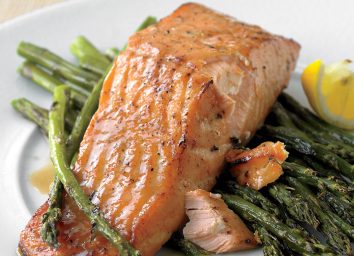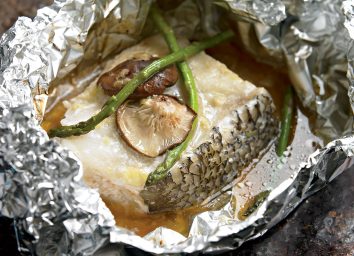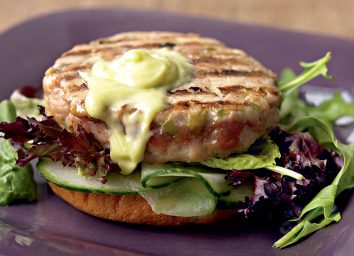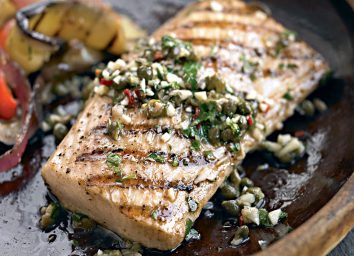Blackened Fish Sandwich With Avocado and Cabbage Recipe
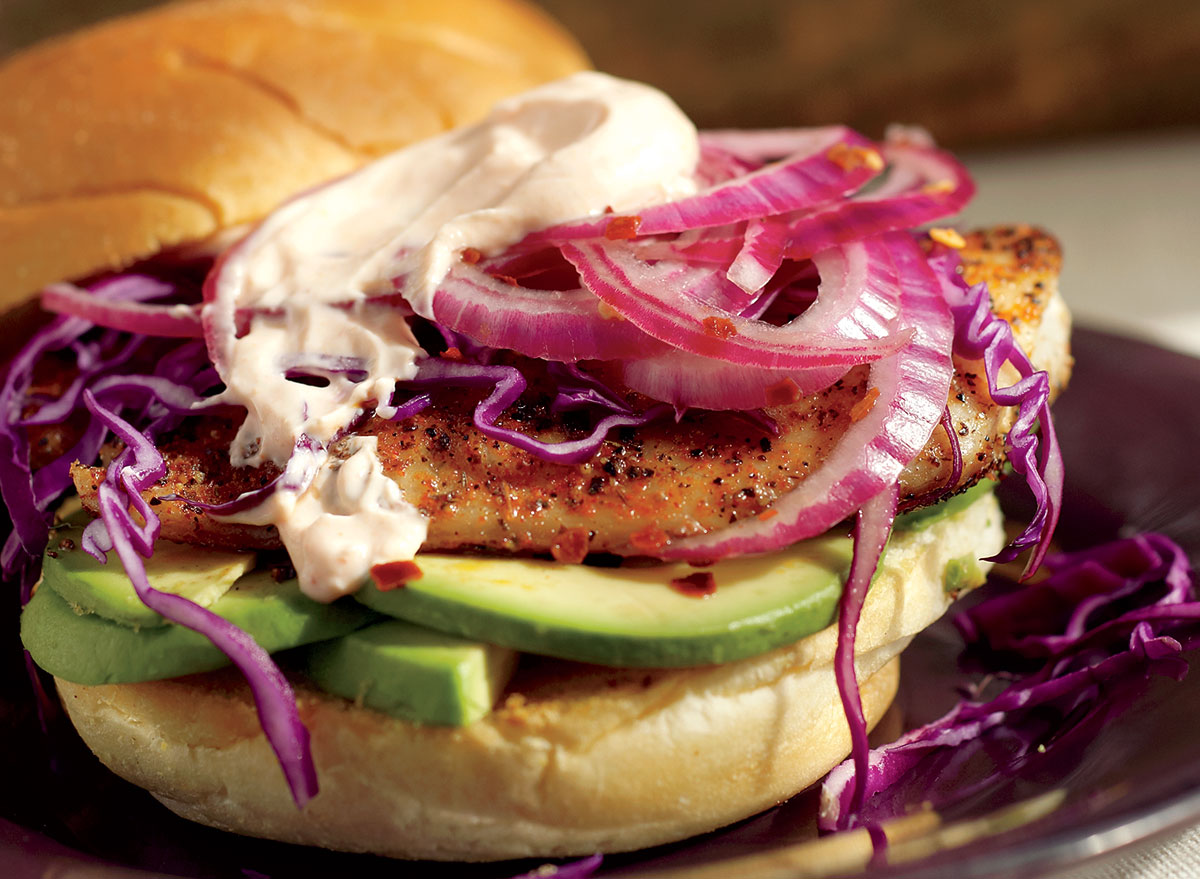
The default fish sandwich in America is a slab of heavily processed mystery seafood, breaded and deep fried, bathed in a tartar-like sauce, and stuffed into an oversize squishy roll. You end up dropping anywhere between 600 and 800 calories and the better part of the day's sodium allotment for something that's supposed to be healthy. Our fish sandwich replaces processed patties with fresh tilapia fillets, frying with blackening, and tartar sauce with creamy avocado and crunchy cabbage. You won't miss the mystery meat alternative you're used to, as this blackened fish sandwich packs a punch.
Nutrition: 460 calories, 14 g fat (2.5 g saturated), 620 mg sodium
Serves 4
You'll Need
1 cup plain Greek-style yogurt
1 tsp sriracha
Juice of one lime
1 Tbsp canola oil
4 tilapia or catfish fillets (6 oz each)
1 Tbsp blackening seasoning
4 whole-wheat sesame seed buns
1 avocado, pitted, peeled, and sliced
2 cups shredded red cabbage
Pickled onions
How to Make It
- Combine the yogurt, sriracha, and lime juice. Set aside.
- Heat the oil in a large cast-iron skillet over high heat. Rub the fish fillets on both sides with plenty of blackening seasoning.
- When the oil in the pan is smoking, add the fish and cook, undisturbed, for 3 minutes, until a dark crust forms.
- Flip the fillets and cook for an additional 2 to 3 minutes, until the fish flakes with gentle pressure from your finger.
- While the fish is cooking, toast the buns (cut side up) under the broiler. Divide the avocado and cabbage among the buns. Top with the hot fish, yogurt sauce, and onions.
Eat This Tip
Blackening is one of our favorite cooking techniques—not just because it's incredibly delicious, but also because the aggressive spice rub adds a potent layer of antioxidants to whatever it coats. Follow these three simple steps for fish, chicken, or pork, and you can enjoy this cooking technique on a wide variety of proteins.
- Step 1: Coat each piece of fish or meat on both sides with about 3⁄4 tsp blackening seasoning.
- Step 2: Cook, undisturbed, in a very hot cast-iron skillet coated with canola oil until a dark crust develops.
- Step 3: Flip and repeat, until cooked all the way through.
